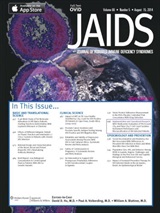Posted on July 11, 2014
Source: JAIDS

Background: The potential epidemiological impact of isoniazid preventive therapy (IPT), delivered at levels that could be feasibly scaled up among people living with HIV (PLHIV) in modern, moderate-burden settings, remains uncertain.
Methods: We used routine surveillance and implementation data from a cluster-randomized trial of IPT among HIV-infected clinic patients with good access to antiretroviral therapy in Rio de Janeiro, Brazil, to populate a parsimonious transmission model of tuberculosis (TB)/HIV. We modeled IPT delivery as a constant process capturing a proportion of the eligible population every year. We projected feasible reductions in TB incidence and mortality in the general population and among PLHIV specifically at the end of 5 years after implementing an IPT program.
Results: Data on time to IPT fit an exponential curve well, suggesting that IPT was delivered at a rate covering 20% (95% confidence interval: 16% to 24%) of the 2500 eligible individuals each year. By the end of year 5 after modeled program rollout, IPT had reduced TB incidence by 3.0% [95% uncertainty range (UR): 1.6% to 7.2%] in the general population and by 15.6% (95% UR: 15.5% to 36.5%) among PLHIV. Corresponding reductions in TB mortality were 4.0% (95% UR: 2.2% to 10.3%) and 14.3% (14.6% to 33.7%). Results were robust to wide variations in parameter values on sensitivity analysis.
Conclusions: TB screening and IPT delivery can substantially reduce TB incidence and mortality among PLHIV in urban, moderate-burden settings. In such settings, IPT can be an important component of a multi-faceted strategy to feasibly reduce the burden of TB in PLHIV.